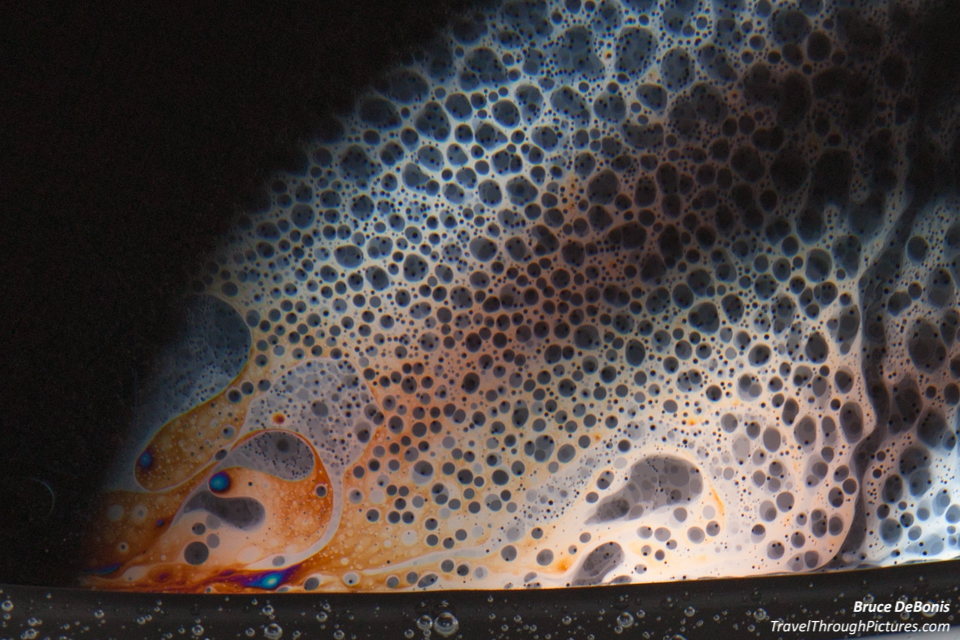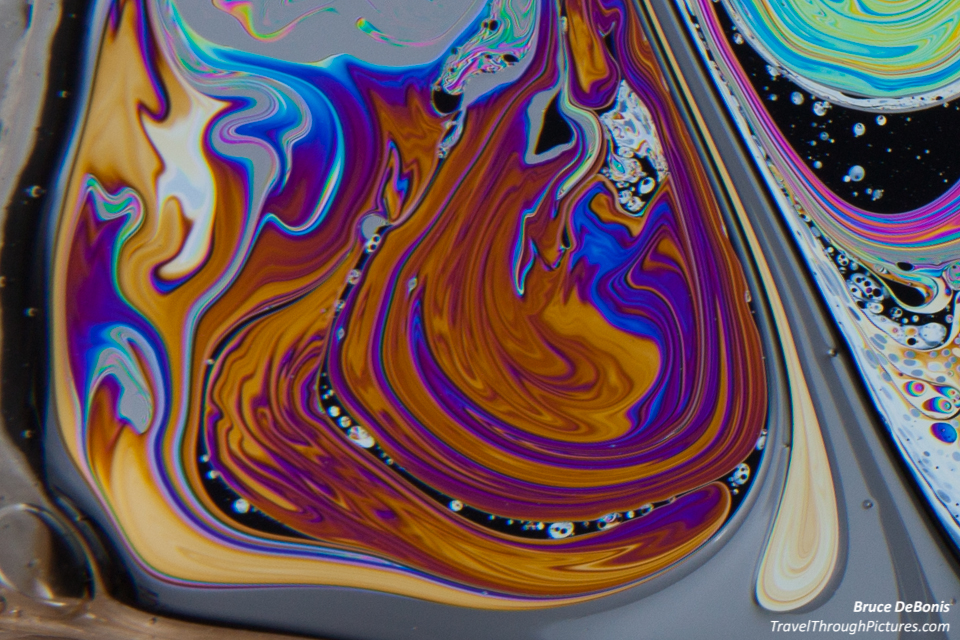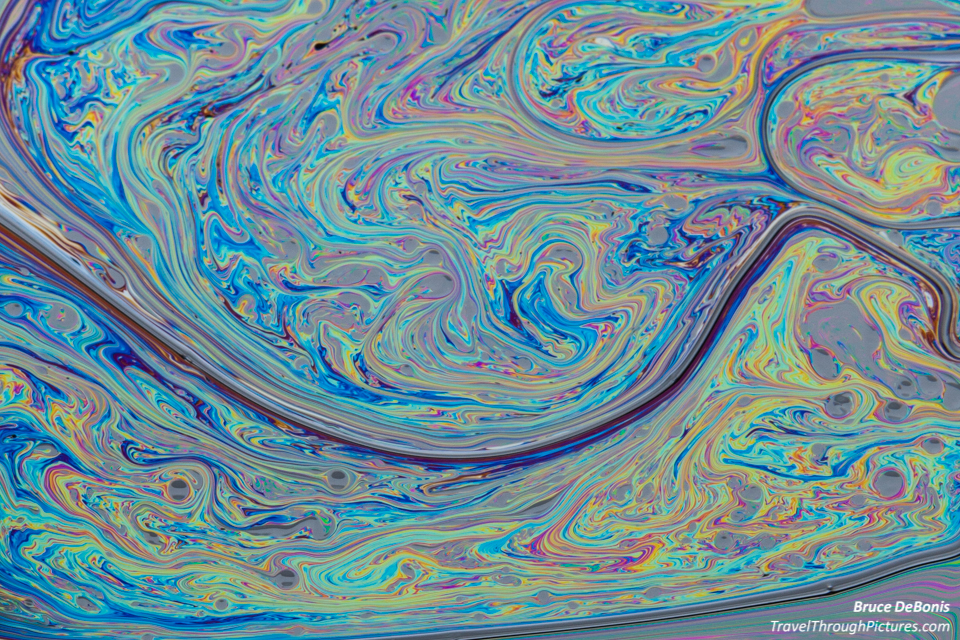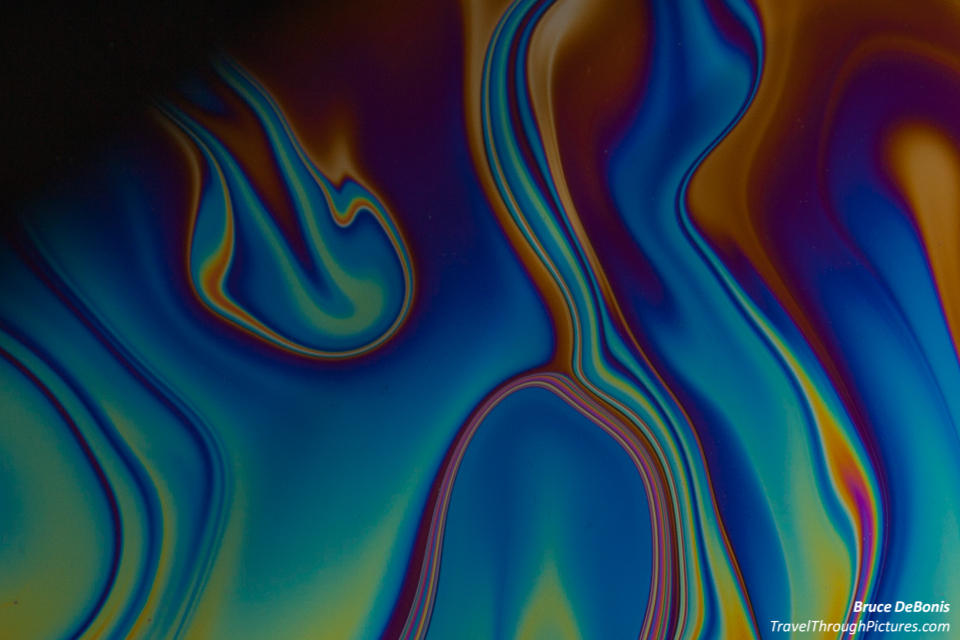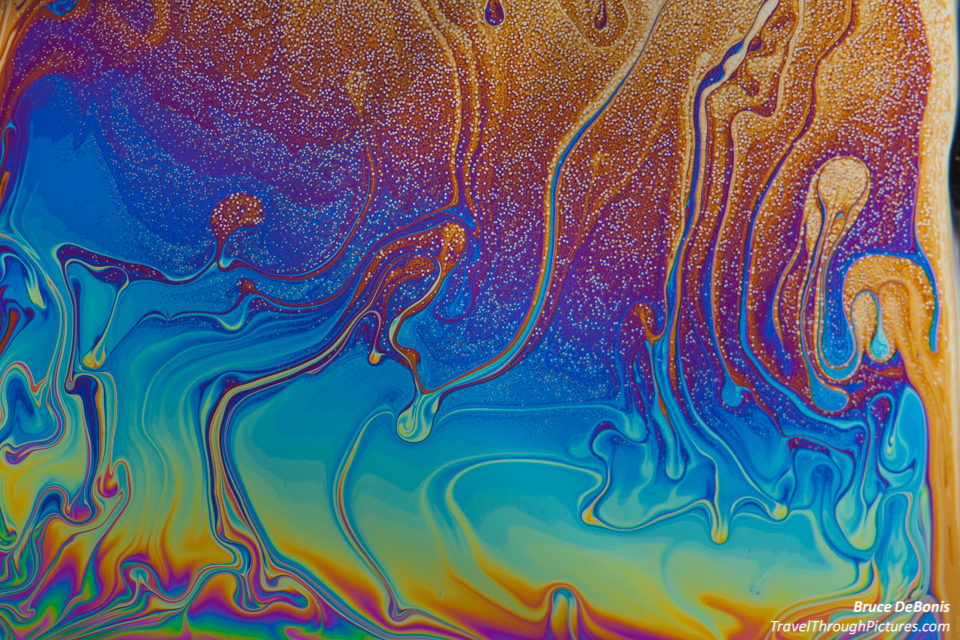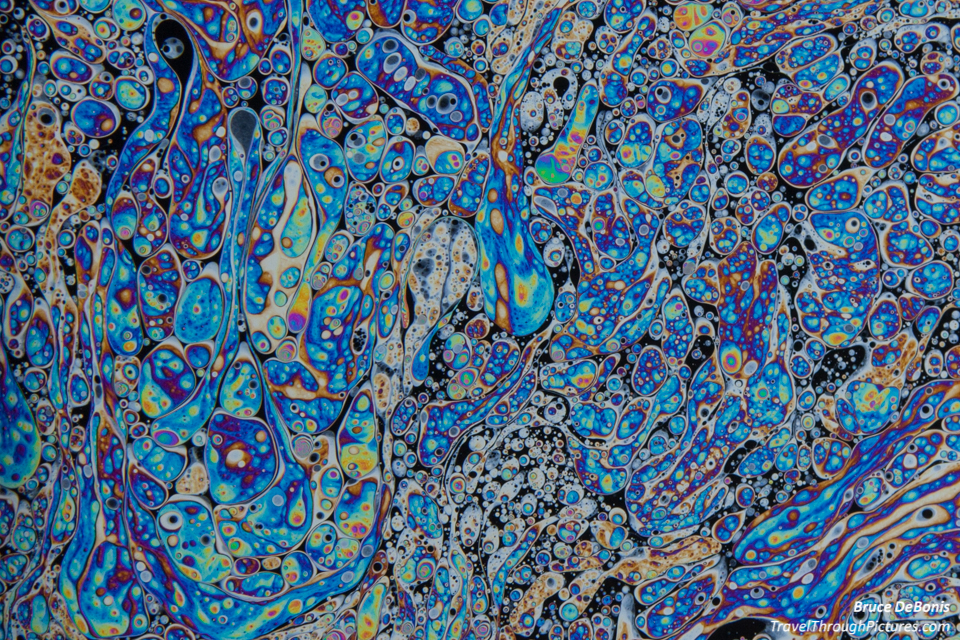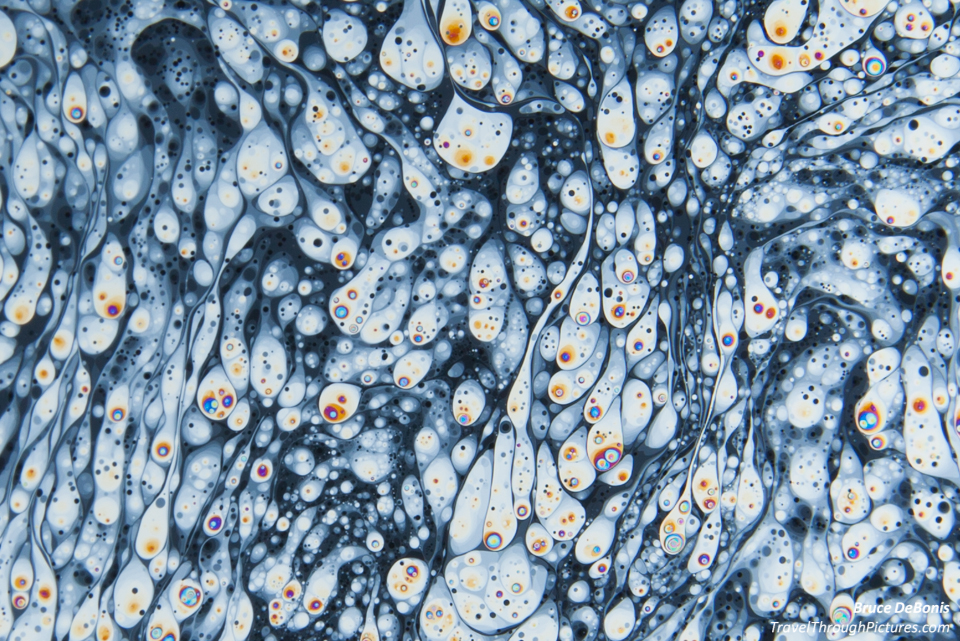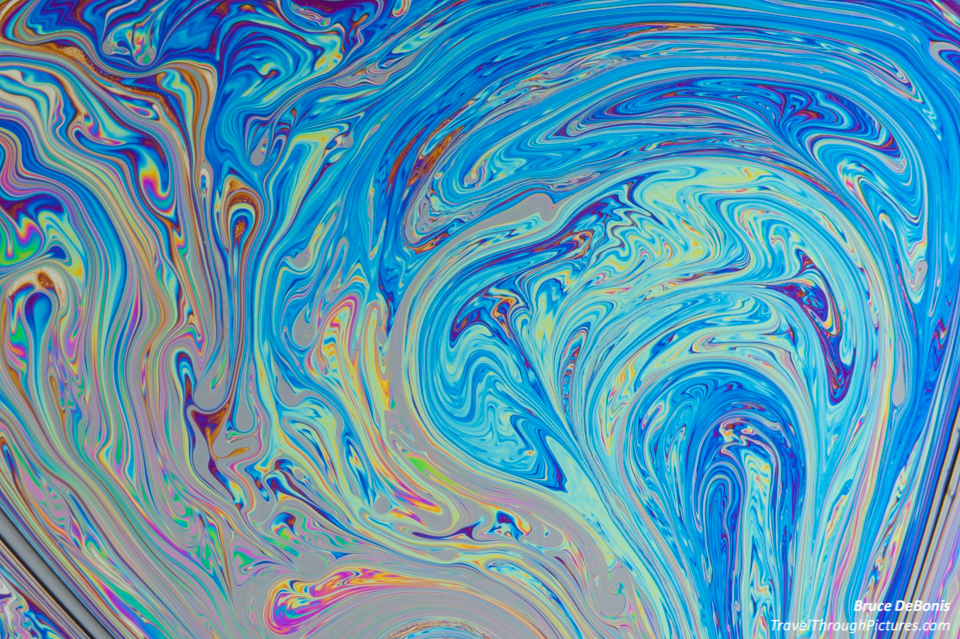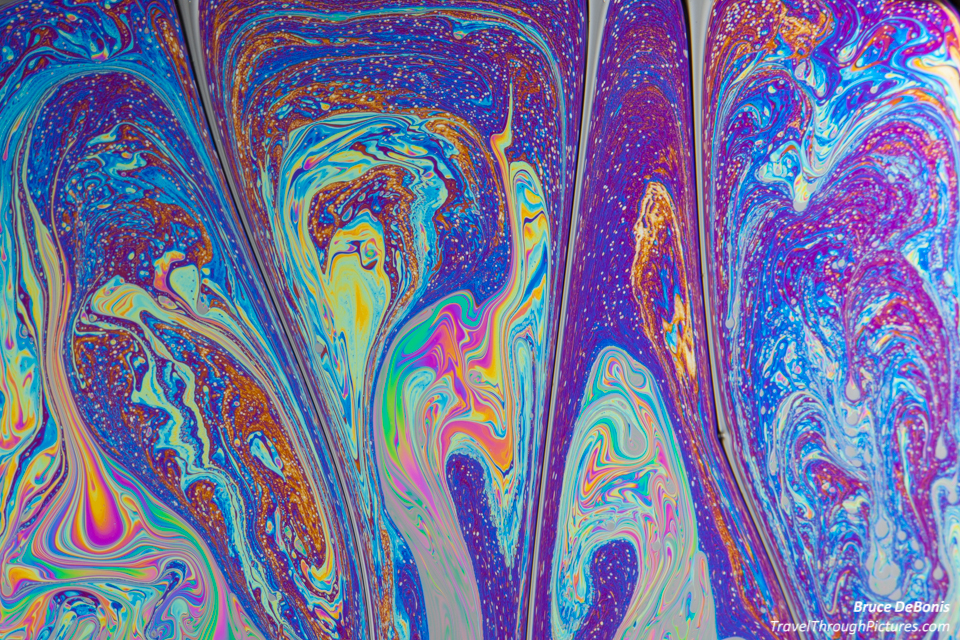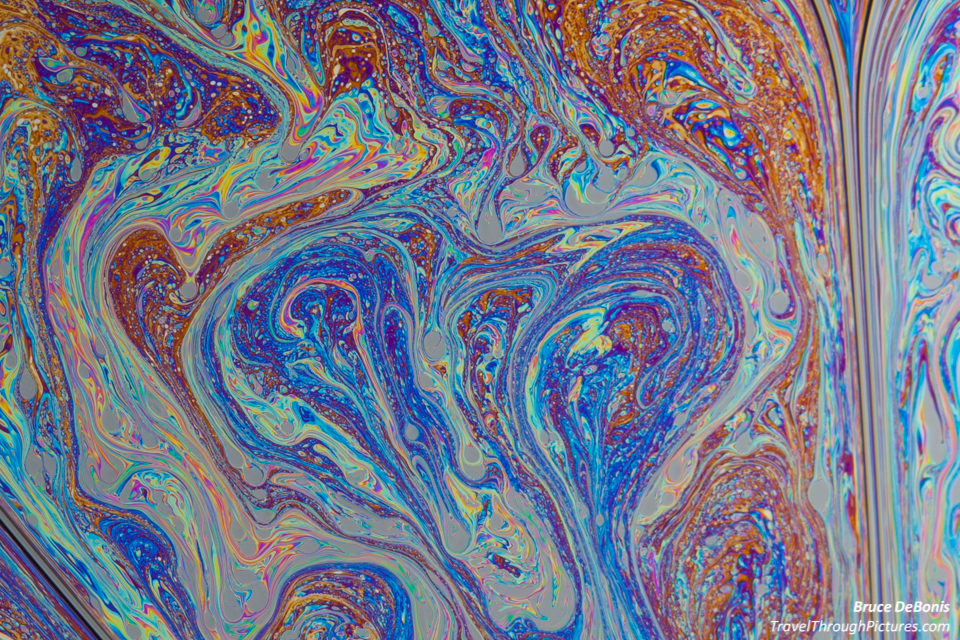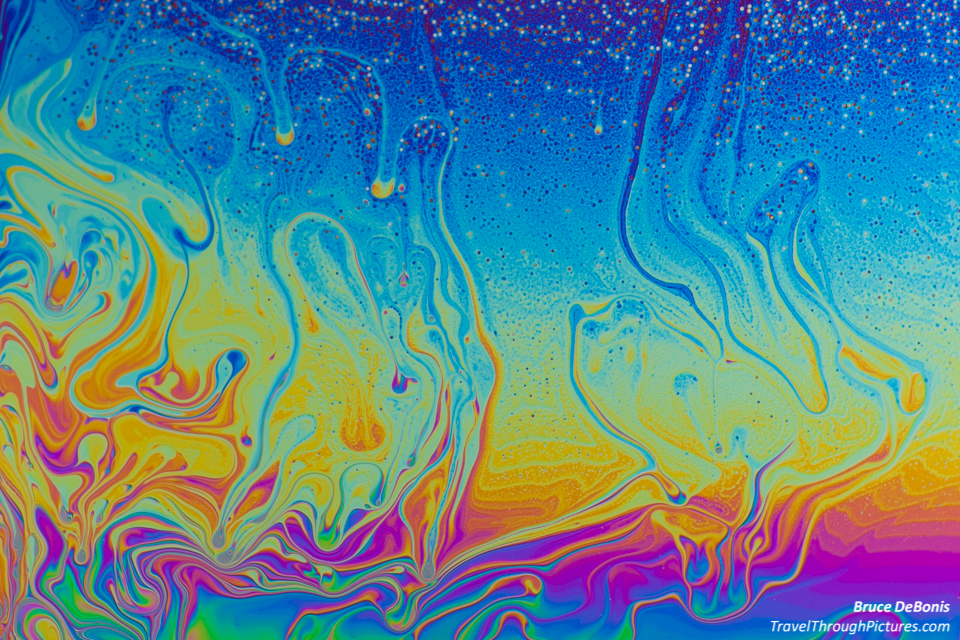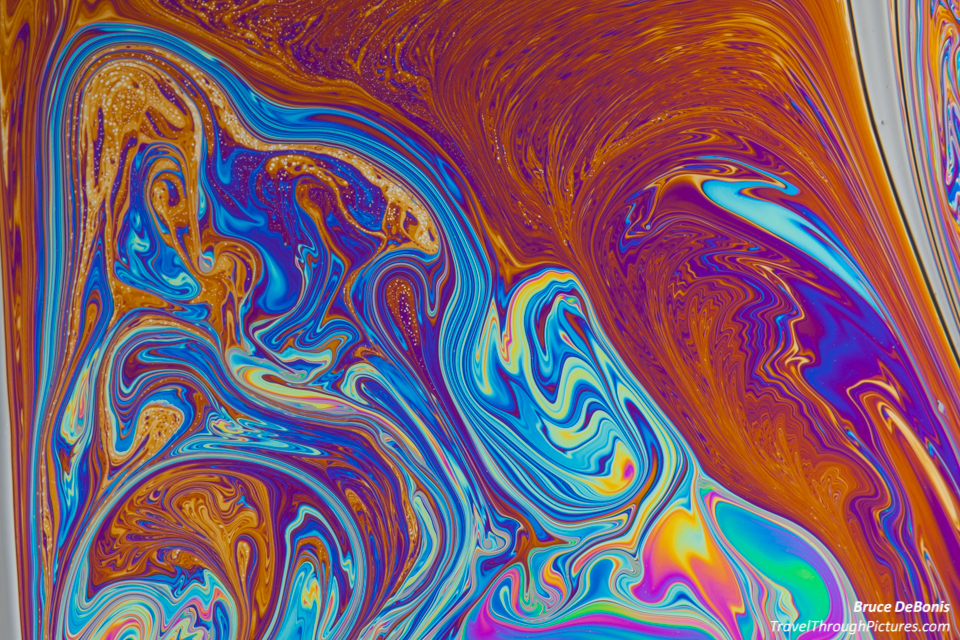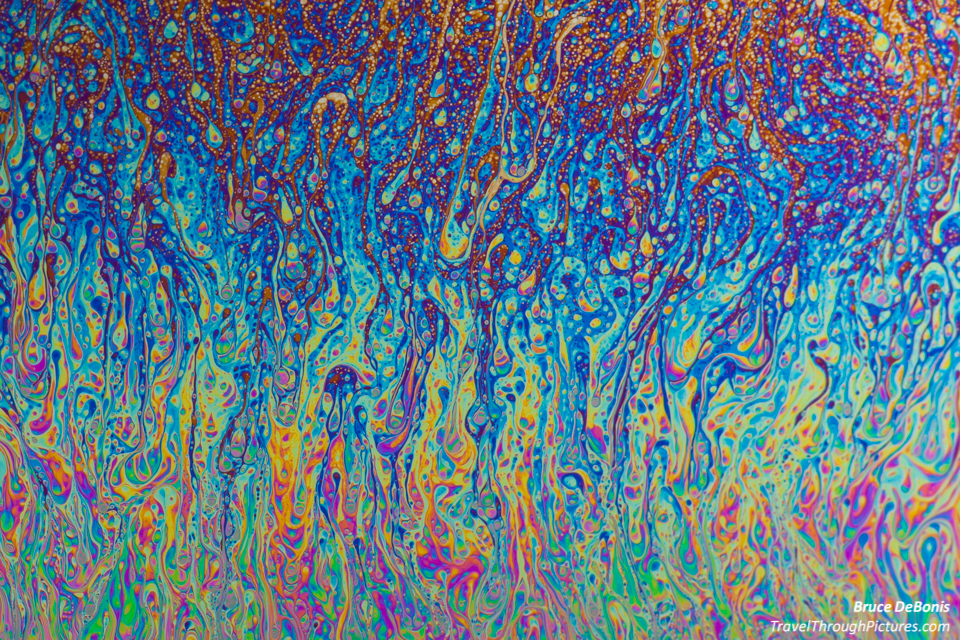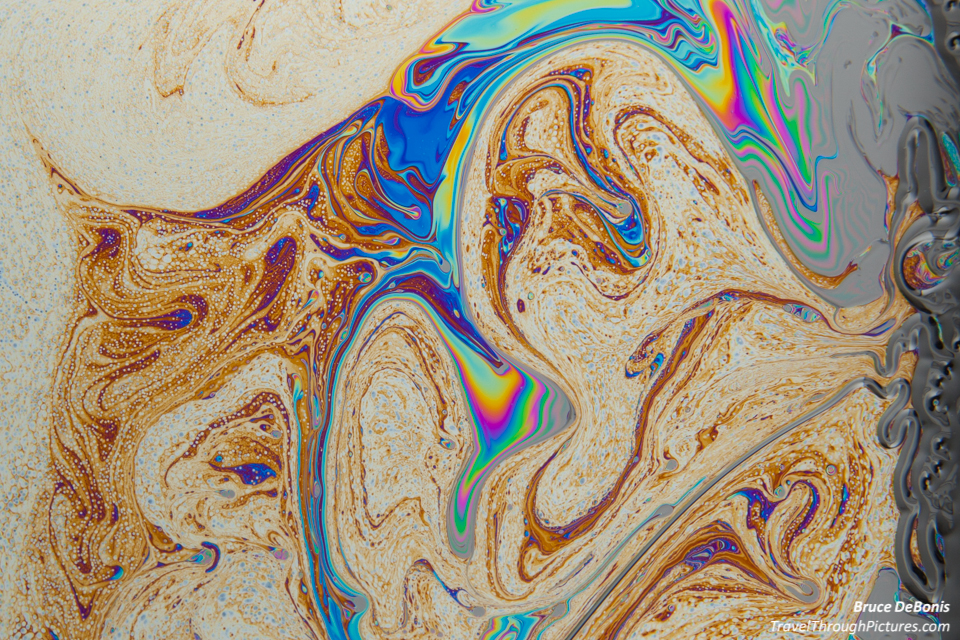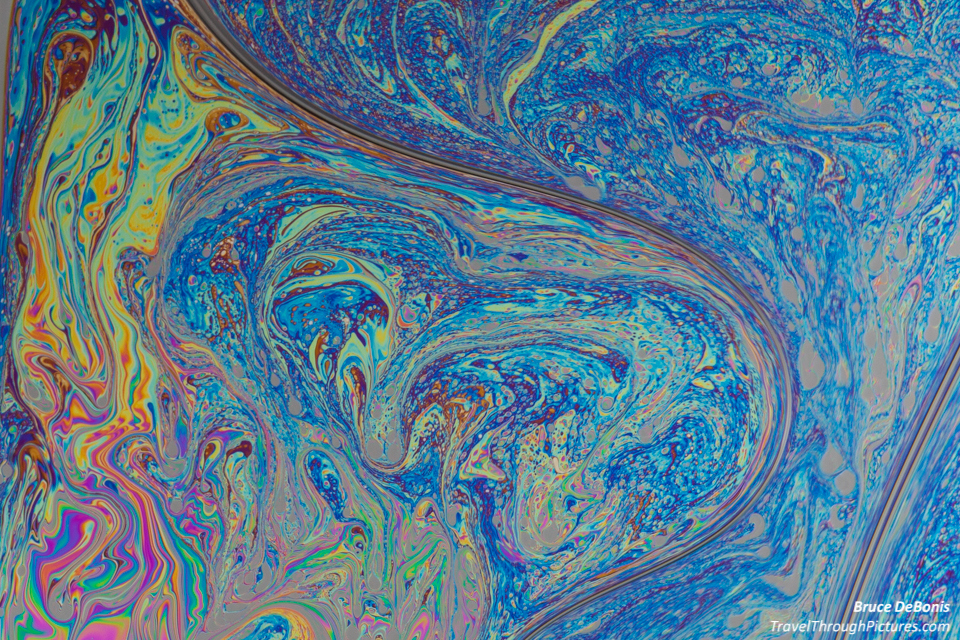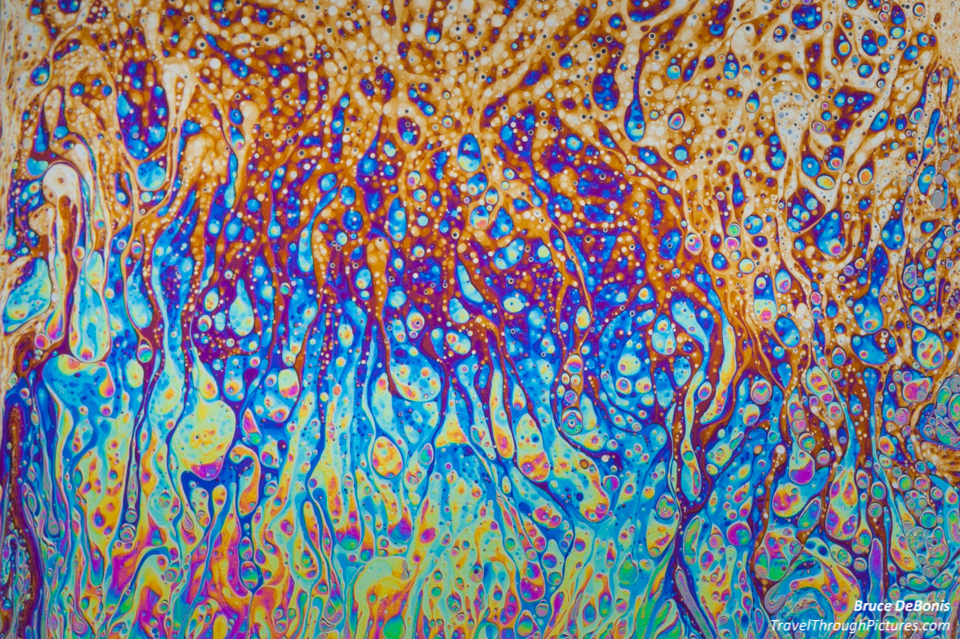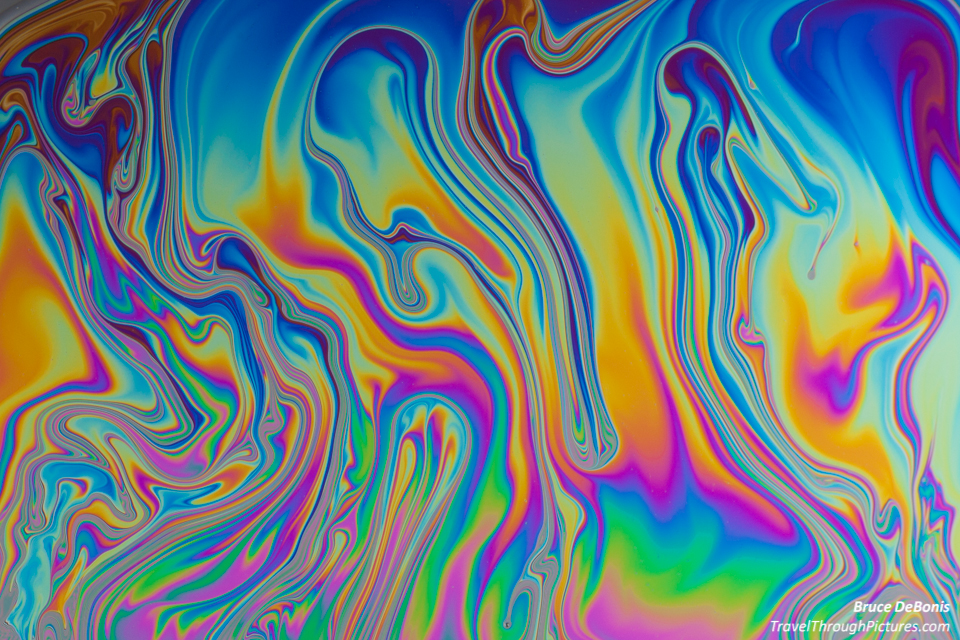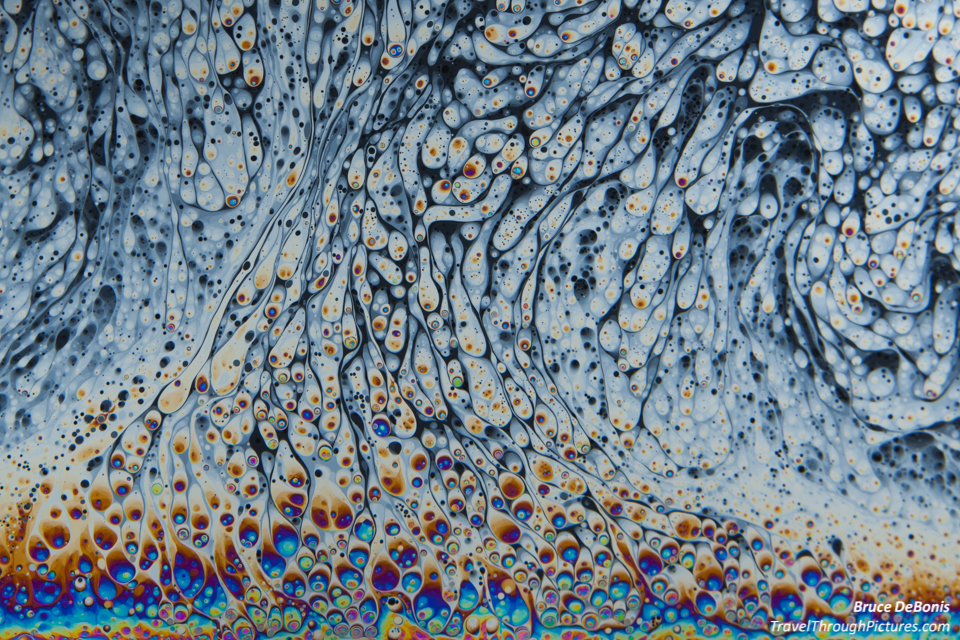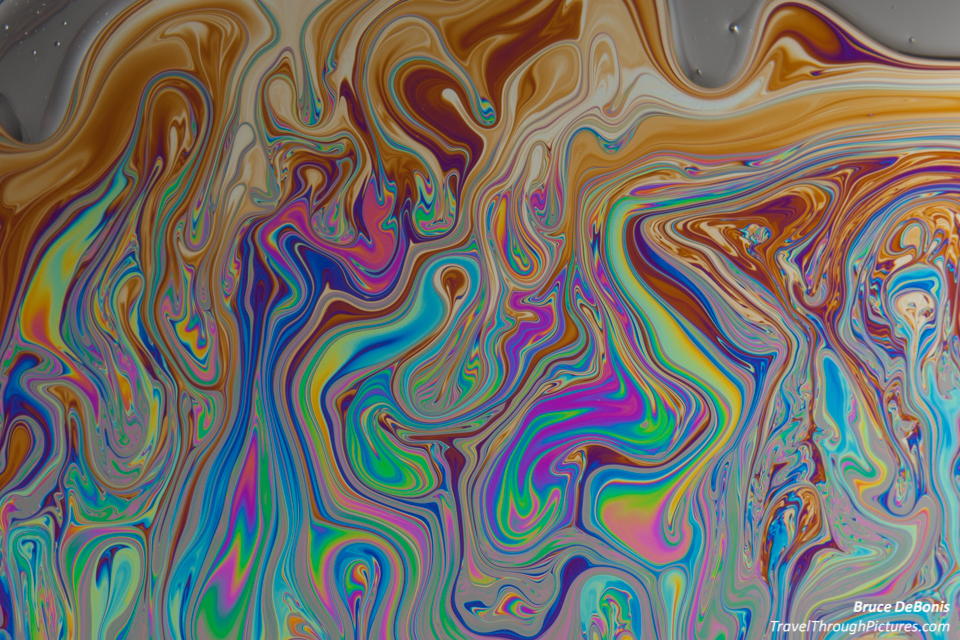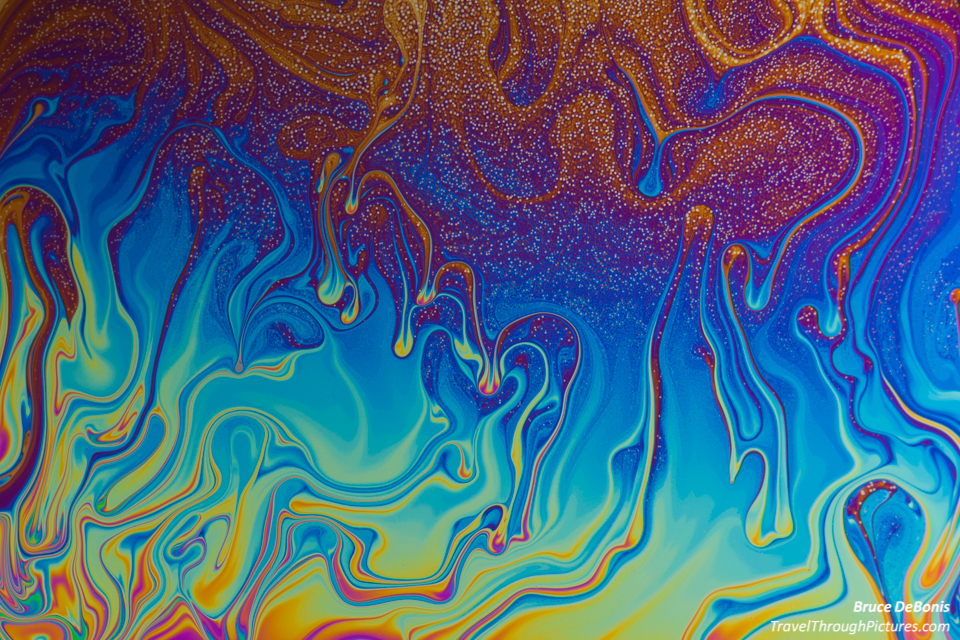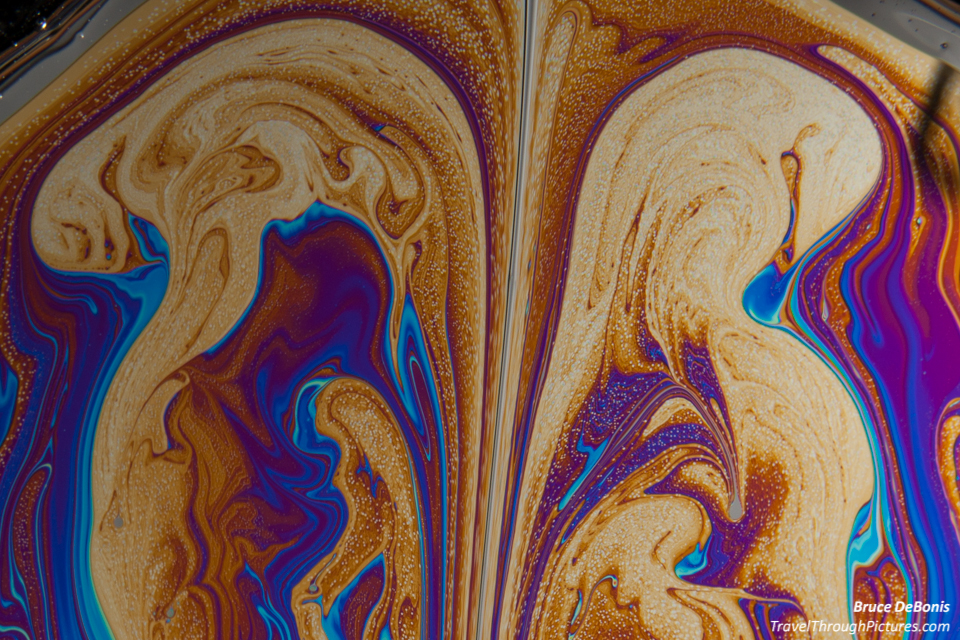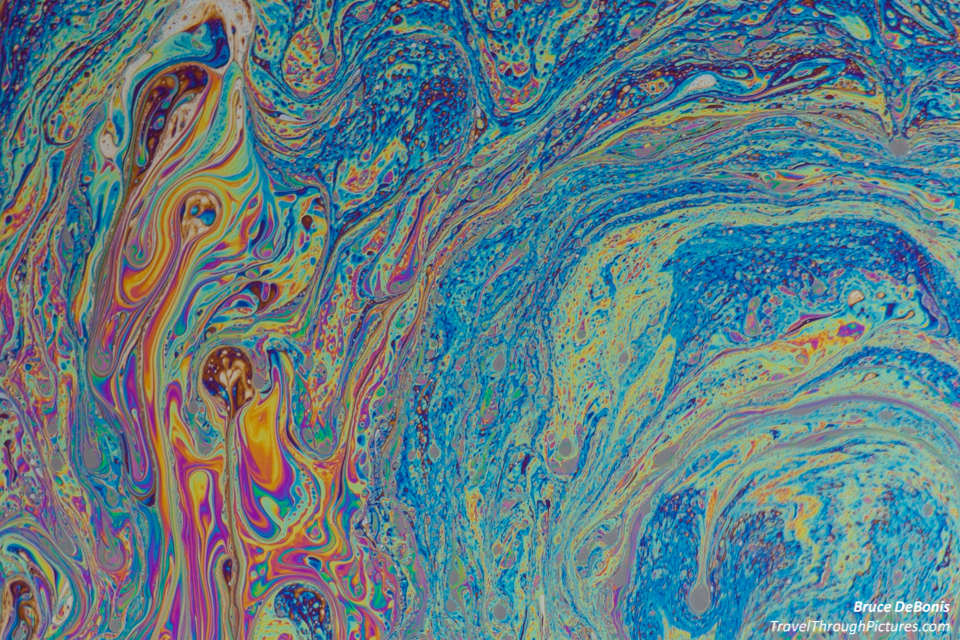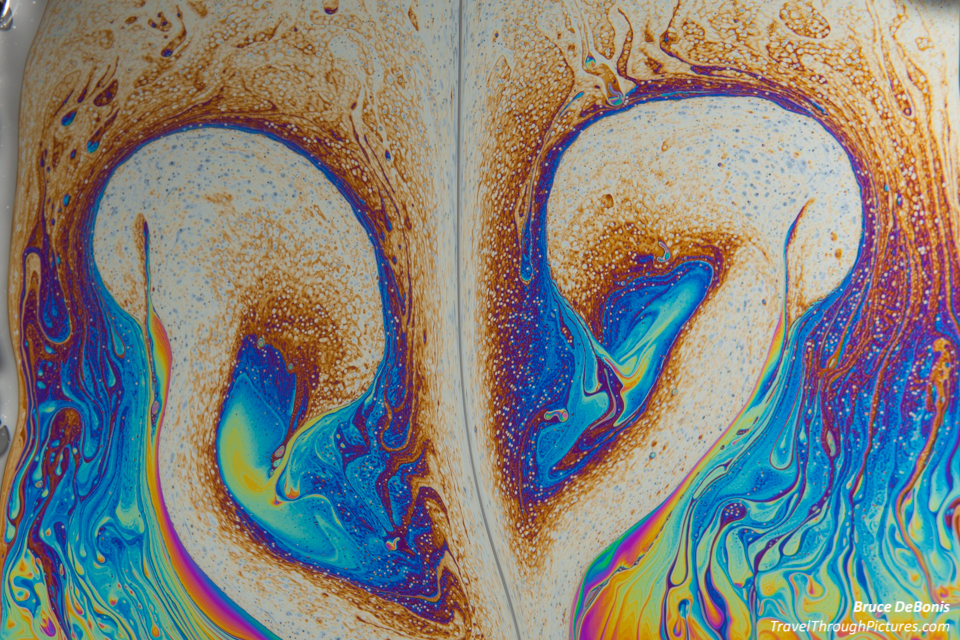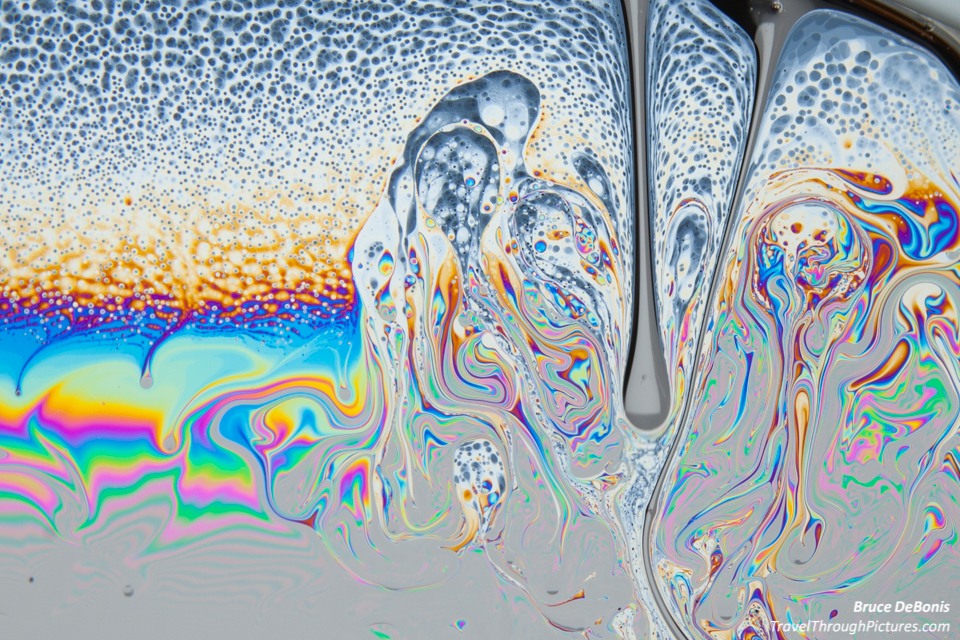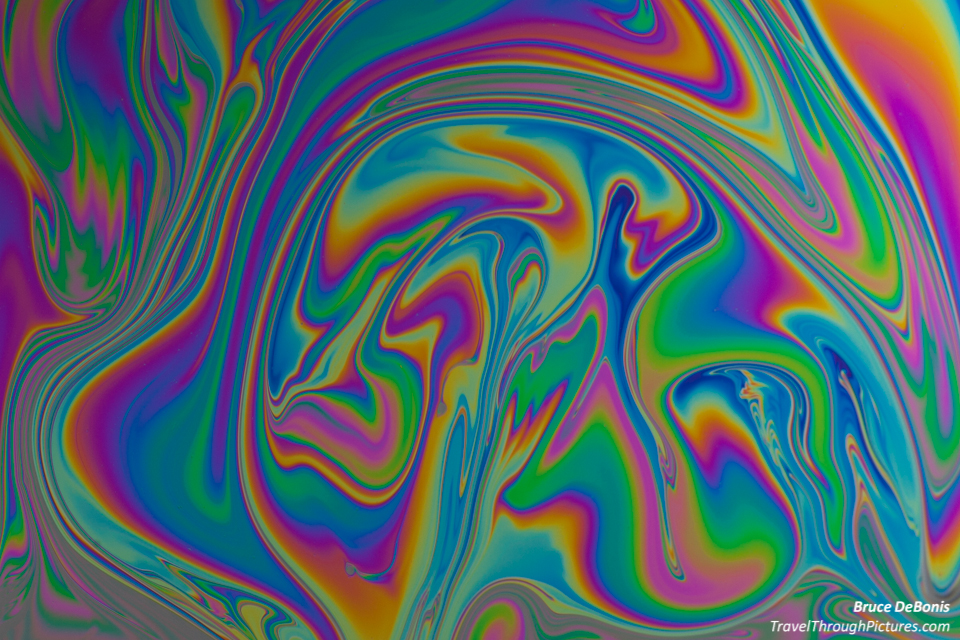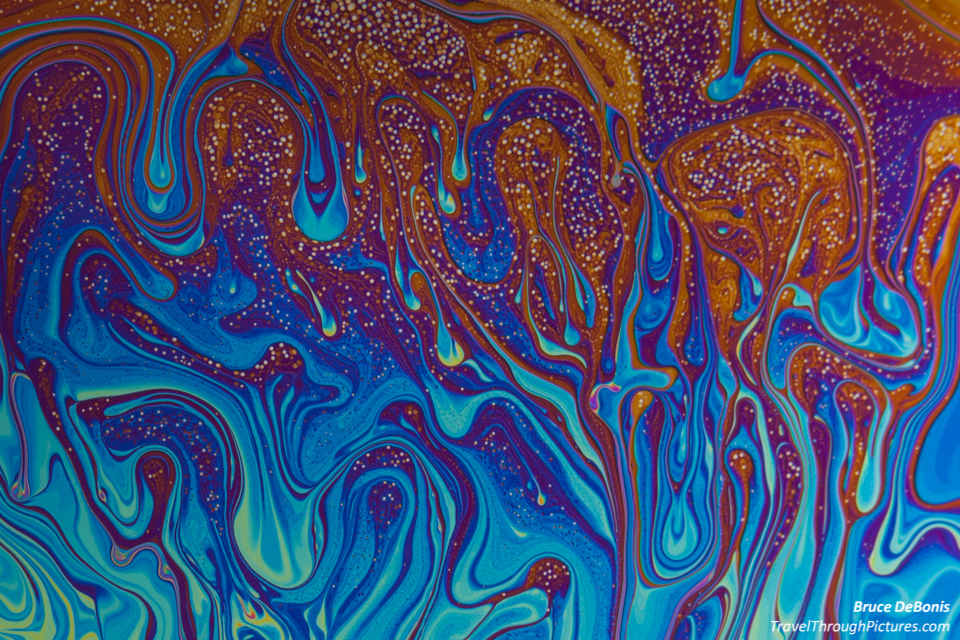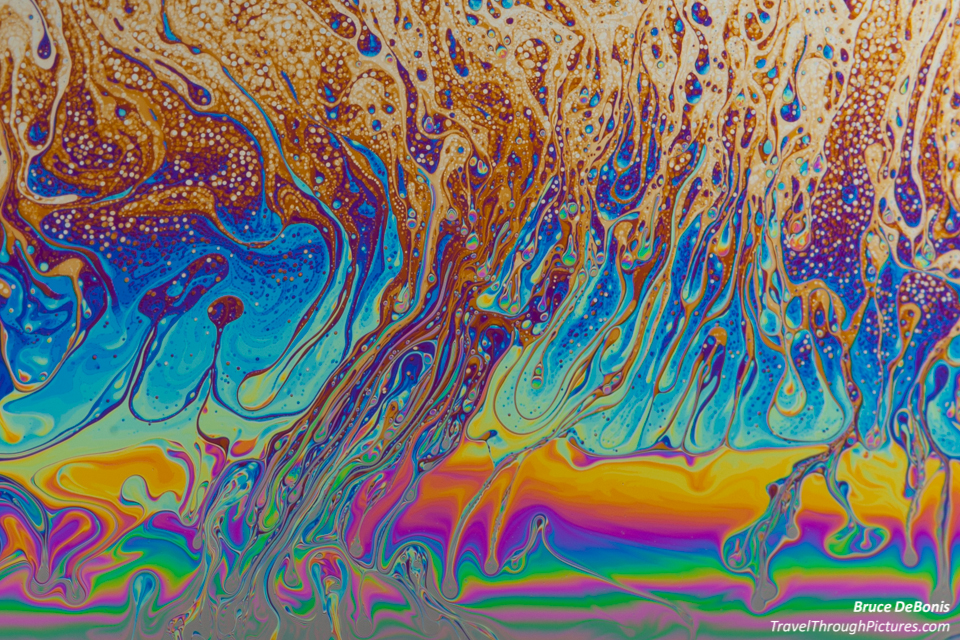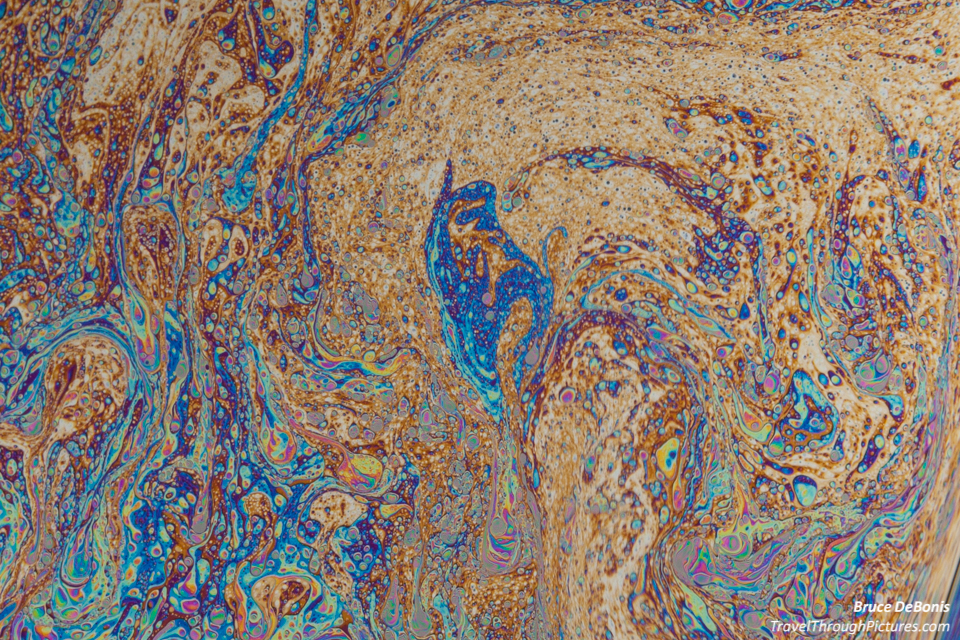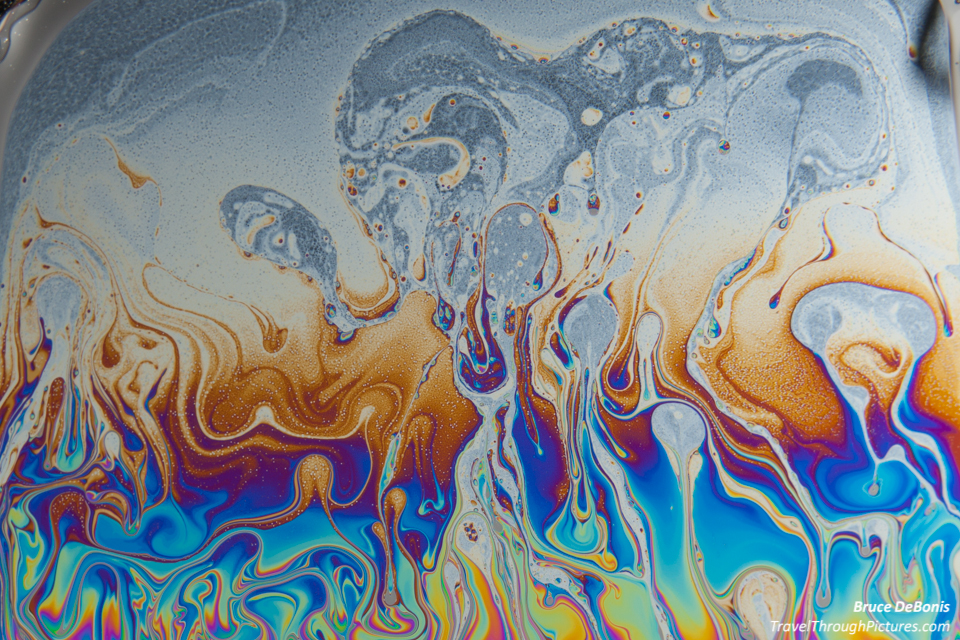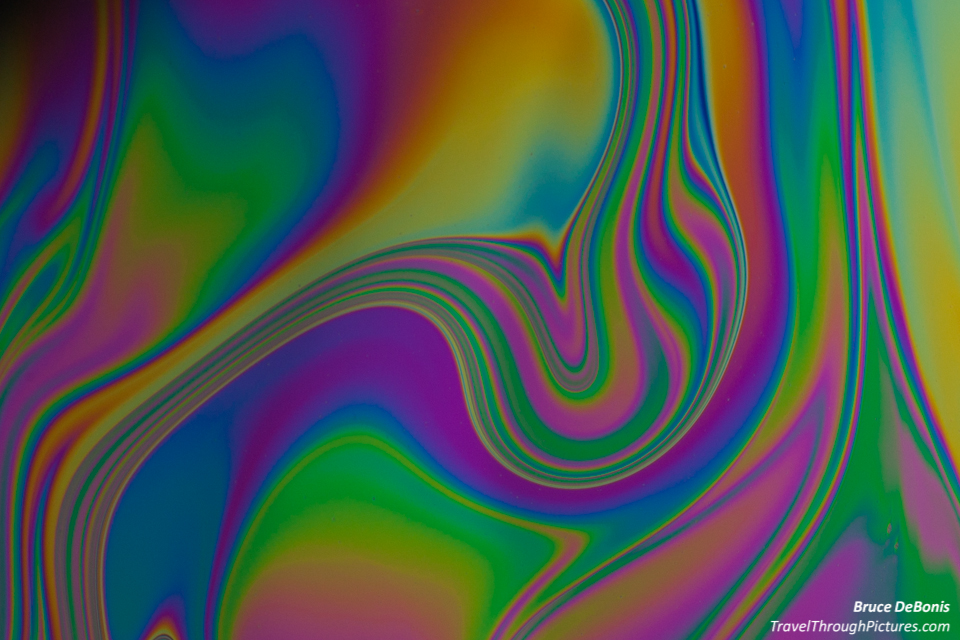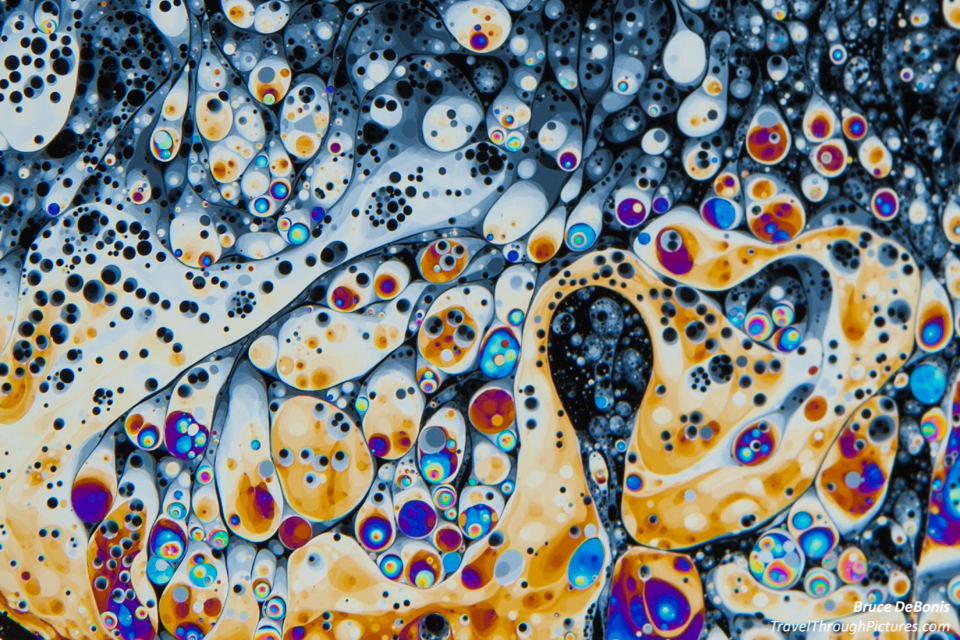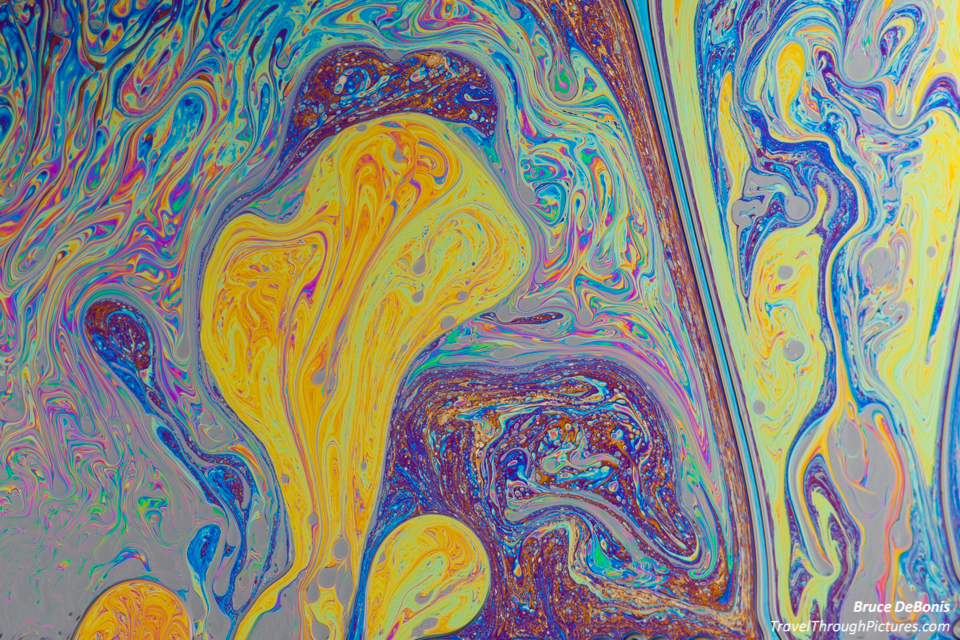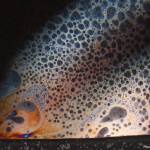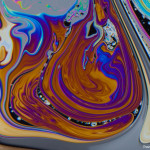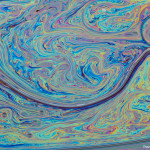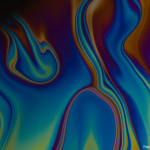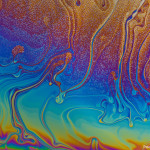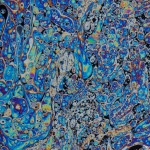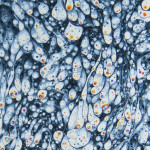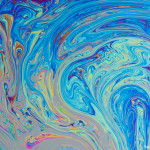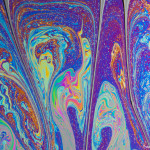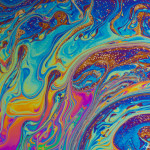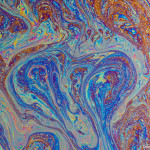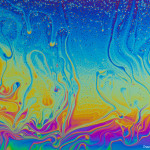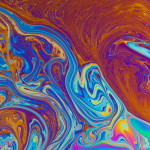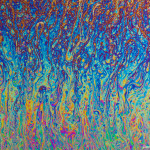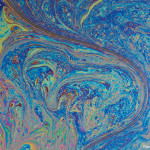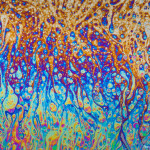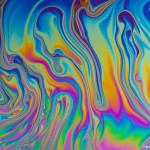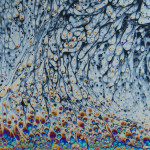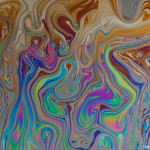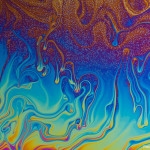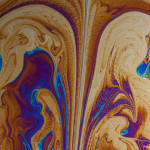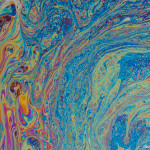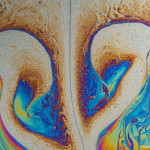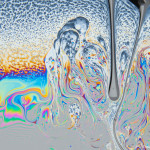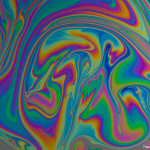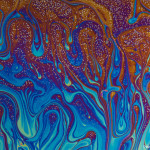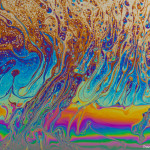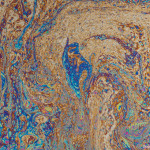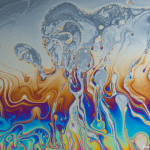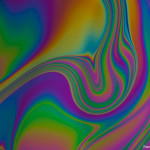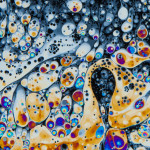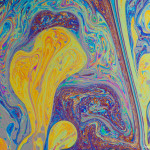Groovy Has Costs, So You Were Told
Did you ever wonder when those flashbacks would actually occur? Were you really going to get them? Flashbacks were to be punishment for your youthful indiscretions and used as threats designed to modify your behavior to be more Eisenhower like…. or else. You were warned about them on TV by men who wore those white lab coats and black glasses right along with those frying-eggs-as-brains ads. They wanted you to believe that sometime in the future, without warning, you would suddenly get up from your desk and believe you could fly. Well it didn’t happen to me (yet). But photographing soap films is the next best thing to reliving one of the funner parts of your youth.
Things got a little grayer as we got older. No more color. Spouse throw out your prized lava lamp? Oh No! Your tie die t-shirts shrunk suddenly from a dryer that was just too hot? Yikes! Maybe you were a geek who missed the whole Age of Aquarius thing and struck out in the Summer of Love. Yes, soap films add the missing color to your drab conservative life. At least it will kill a few hours.
Soap Films
What you will need:
- Inspiration: Pilsner Urquell beer, cold, close by, and plenty of it
- Soap film loop: Pipe cleaners (best choice) or coat hangers/gauze/contact cement (or any fast drying adhesive with nasty, experience-enhancing fumes)
- Loop hangar: Coat hangars
- Soap solution container: A high container to raise up and dunk your loop (I made one from CD case lids and silicone glue)
- Soap: I used clear Dawn Clear dish detergent but any thick liquid concentrate will do.
- Black background: I used black foam board as a background so your soap films show their grooviest best
- Flash reflector: I used and prefer white foam board as you will use its white surface to properly angle your camera and soap loop (read more about this later)
- Heavy, big towel: You will have to wipe your hands and everything else down constantly as this soap goop gets everywhere
- Flash with remote trigger: I used two flashes (because I happen to have two) and a cheap remote trigger device; you can use just the flash mounted on your camera, but a separate flash will give better results.
- Lens for close up work: Used my 70-200 zoom with stacked extension tubes to get a poor-man’s macro setup; best lens would be a true macro but any lens that allows close-up focus will work.
- Tripod: You will want your camera to always be in the exact same spot to make focusing easier, more accurate, and to preserve the perfect camera-to-loop angle for the best color pop
Michael’s is a good source for foam board and pipe cleaners.
Make The Loop
The soap loop is nothing more than a loop you use for blowing bubbles. Really that is all it is. But I love to make things nice and complex so you really need a loop system. The loop system consists of a few components: 1) the loop and 2) a hanger to support the loop, 3) gauze or other material to hold soap along with contact cement to hold the gauze in place.
The easiest and best way to make a loop is with pipe cleaners (no gauze needed here). I tried the hangar/gauze loop and then the better method of pipe cleaners sold at Michael’s craft stores as they hold soap, easy to manipulate, and don’t twang and vibrate like other more solid materials. If you use just a coat hanger for a loop, then wrap it with gauze and hold it together with contact or other household cement that is not water soluble.
Some tips for making a good loop:
- Make the loop a rectangle and small 2.5” x 3.5”. Definitely try a round loop, “V” shape, or even larger ones, but you will get better results in less time if you keep the loop small, rectangular in shape but with an arched top, and no larger than a credit card. I wasted time and efforts by starting out with large loops and got bad results. A flat top will create runs in the soap and an arched top will drain the runs to the side. Both create very different effects and if you want the large swooping color swirls, use the arched top.
- Wrap the loop in gauze if you use a wire. If you use a hard material like a coat hanger to make your loop, you will need to wrap it in gauze to have a nice supply of soap available for longer viewing. This gauze will create streams of flow creating other elements of grooviness to the shapes and swirls that will appear. To keep the gauze in place, brush on some contact or other household cement. I also tried Popsicle sticks, but the absolute best material is a pipe cleaner.
- Keep the loop upright. Ideally, I think keeping the loop horizontal and parallel to your work surface would result in films that last longer and with less flow. But you won’t have your nice black background as you will be shooting down at your soap catch bowl.
- Move the soap, not the loop. Notice I lift the soap up to the loop and did not dunk the loop into the soap. You want to keep the loop as stationary as possible to make re-focusing easy. I did try dunking the loop into a flat bowl, but it takes too long to reposition the hoop and then refocus.
- Keep your hangar short and strong. When you lift the soap solution to the loop, the arm will vibrate and swing making focusing difficult. Notice I bent a triangular brace to help eliminate some motion and add strength.
Make the Soap Solution
I used Dawn clear but any thick, concentrated, liquid detergent will do. I read on other’s blogs that mixing sugar into the soap will thicken it so I gave that a try. I can’t say it worked all that much, and I can’t help wondering if the sugar affected the color display, so try pure soap first, then add sugar later if you want to. If you do add sugar, you will need to add a ton of it to really make the soap thicker.
Mix the soap and sugar gently to limit micro bubbles. These micro bubbles will show in our pictures and most of my pictures have them. Mixing the solution the night before you shoot will allow these bubbles to settle out of solution.
Buy a new, large bottle of the stuff, and just in case, buy two bottles. Having an ample supply is will allow you to swap out the soap when it becomes too full of bubbles.
Make The Soap Container
At first, I tried a large flat bowl for loop dunking. This didn’t work as the loop must remain stationary to allow for quicker focus. Also, re-anchoring the loop after dunking takes time and the film may pop before you get any good pictures. Best way is to raise the soap to the loop.
A good soap container is one that is narrow and tall to cover the loop. For this, I took some old CD case covers and fashioned a simple container with silicone glue to make a good seal. I recommend using your spouse’s old disco CD covers as this is probably the only thing they were ever good for.
The Set Up
Check out my diagrams and photos of my setup and just duplicate it. Some tips:
- Shoot into a black background. I used black foam board. Without the black background, you won’t see the cool colors and that is no fun.
- Use a flash. Using a flash will freeze the action. It may surprise you, but that soap film is a wiggly, swirling mess of movement. A flash will freeze the action as flash durations are amazingly short despite what your eyes and brain think they see.
- Use reflected flash. Bouncing a flash of a white foam board will work better as the lighting is more even. When you use a flash at real short distances, it is tough to get the aiming just perfect and the light smooth so be careful and use the wide-angle filter if you have one. If you don’t have a separate flash unit and only the one mounted on your camera, that is OK but use a white board on the side to reflect some of that flash back onto the soap for fill and evenness. I got my white board from Michael’s craft store.
- Keep the flashes behind the front of the lens. If you put the flashes in front of the lens, and then aim the flashes back to a white board, the light can cause orbs and reflections in the lens glass and ruin your picture.
- Shoot in manual mode with a narrow aperture. Gotta go manual for this one. Set your aperture to f/13 or narrower (higher number), your shutter at around 125/sec, ISO at 100 for highest quality, and start with your flashes at around ¼ power. If too dark or bright, change the flash power and/or move the flashes closer to your subject. For on camera setup, see Shooting below.
- Start with the camera “straight on” to the loop. This will make focusing easier and more accurate. Start with the camera, on a tripod, shooting at the same height as the loop and perpendicular. You will then change this setup to get the colors to pop as I explain in the next section.
Get the Correct “POP” Angle
The loop must be at a particular angle or greater to the camera or the colors will not pop and the soap film will be translucent and colorless. Follow these steps to get the correct angle:
- Put the white board behind you. This will help you get the best positioning as it will help you see its reflection in the soap film and then when the color pops.
- Aim the camera “straight on” to the loop. Now dunk the loop into the soap (or really the soap onto the stationary loop) and look through your camera. You should see nothing. The soap film should be there but be clear. This is what happens when the angle is too straight on.
- Increase the angle of the loop to the camera. Start turning the loop ever-so-slightly while looking through the camera. At some point, the translucent soap film will POP with color swirls or at least become shiny and visible. Stop there. Don’t go any farther. Try backing off until the film disappears and then go back again. You want the angle to the camera to be as straight on as possible but still have the soap film shine.
The reason for this exercise is that as you can’t see the soap film straight on, you can only see it an angle to grab the light refraction. If you increase the angle too much, then you run into depth of field issues where you won’t be able to get the whole film into focus at one time. You see, your camera has a limit to how much is in focus in front of or behind the focus point. This distance of in focus is called the depth of field. When you shoot close up, the depth of field gets really thin with just fractions of an inch in focus in front and behind your focus point. When you put more angle into the soap film, you will notice that the loop’s front-to-back distances to the camera increases and the odds that something will be out of focus grows. Notice in some of my photos, how I start to lose focus in the far right of the frame. A narrower aperture (higher f/number) would have improved this and eliminated out of focus spots.
Shooting
You have to work quickly. Lift the soap to the loop, drop the soap (no jokes here), stop the loop from swinging, wipe hands on towel, focus, shoot.
If the picture is too dark, increase the power of the flash. If too bright, lower flash power. If still too dark, first move your flashes closer to your subject and only then try bumping your ISO up to 200, and then to 400 (your picture quality will go down with higher ISO numbers). Really try and keep your aperture narrow at least f/13 or more as you will need the added depth of field that higher numbers give you to get the whole soap film in focus.
Focusing
I had to use live view and focus by hand. I used x10 to get sharp focus (the camera magnifies the view times 10). Every once in a while, the camera could lock with autofocus, but it was rare so I just went with manual focus. Try autofocus first and if your camera can lock on the swirls, you win. If your camera will lock with autofocus, use center focus point only and point it at the center of the film to maximize your available depth of field.
Post Processing
Post processing on your computer is the key to get a really cool shot. You will want to crop for two reasons:
- Improve composition, and
- Zoom in for a totally different shot.
I shot RAW for getting the best results so in software, set white balance to “Flash”. The only other tweaking I did was to brighten them up and increase contrast. Sometimes I would increase BLACK or WHITE points but that was about it. But the real opportunity here is composition as the possibilities can be endless. Cropping will reveal totally new pictures within a picture.
Denouement
I blasted down a ton of Pilsner Urquells for this project. They are absolutely required. I needed two cases on hand as this project spread out over three weekends. Total hours was probably only eight at most with the bulk of that time bending coat hangers, lifting bottles, gluing on gauze, lifting bottles, making the soap dish, lifting bottles, getting the angles and flashes correct, lifting bottles, and burping. With the instructions I provided here, you should be able to do this project in about three to four hours time.
Like I always said about shooting birds and wildlife, to get the pictures, you have to put in the effort. It is not hard, but you have to just do it and put in the time. It is fun after all.
So, what do I think of my results? I am pretty happy, even with my resulting beer headache. I would try different soap solutions and loop shapes for the next round. Everyone who saw these shots was impressed. They also thought I was pretty odd for doing it, but they always knew that about me. I probably won’t do it again as I learned soap swirls while fascinating, don’t do much more that swirl around. But it definitely was worth the effort. Give it a try!
The Equipment:
- Canon 5D MkII
- Canon 70-200mm L f/2.8 IS II, with
- Canon EF 12 II and 25 II extension tubes stacked
- Canon Speedlight 580 EXII
- Canon Speedlight 430 EX
- Pixel Ethernet Flash Triggers
- Manfrotto 190 CXPRO4 tripod
- Manfrotto 222 pistola head
- LightRoom 5.4

